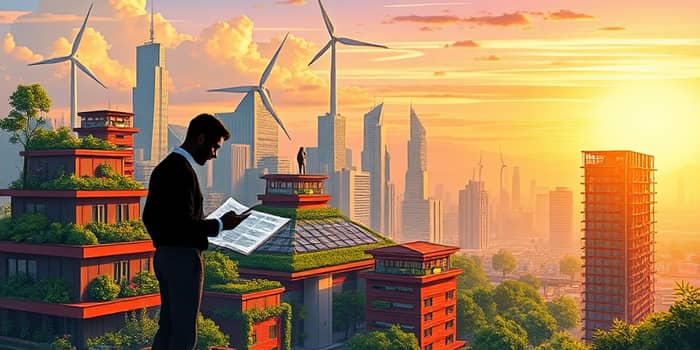
In an age where environmental responsibility and attractive returns converge, sustainable design emerges as a compelling frontier for discerning investors. This article explores the market dynamics, growth drivers, and transformative trends that define eco-conscious investment opportunities.
The global sustainable design market is on an accelerated trajectory, projected to reach $4.2 billion in 2025 with a CAGR of 8.5% through 2033. Meanwhile, the broader design industry grows from $66.15 billion in 2025 to $98.4 billion by 2035 (CAGR 5%). Investors eye these figures for their unparalleled long-term risk-adjusted asset performance.
These numbers underscore the economic relevance of eco-friendly solutions in plant, infrastructure, and architectural design. The green building sector alone soars from $565.33 billion in 2024 to $1.37 trillion by 2034 (CAGR 9.42%), reflecting surging corporate and regulatory demand.
Capital is flooding into sustainable innovation. Venture funding for green building technology rose from $1.1 billion in 2020 to $5.4 billion in 2023, while generative AI investments in design leapt from $2.3 billion to $22.3 billion over the same period. Together, they form the backbone of science-led, AI-enabled sustainability strategies that optimize performance and minimize waste.
Regulatory frameworks in North America and Europe mandate ESG disclosure, driving growth in sustainable bonds, impact funds, and thematic investments. This trend is further supported by investor appetite, with accelerating issuance and investor appetite for green instruments across global markets.
Artificial intelligence now underpins predictive maintenance, energy optimization, and site analysis. By harnessing data, design teams achieve data-driven design and optimization decisions that reduce embodied carbon and operational costs.
Simultaneously, the circular economy principle reinvents material flows. Innovations in recycled composites, low-carbon cement alternatives, and modular construction point toward holistic, ecosystem-friendly designs and restoration efforts that benefit both investors and communities.
Retrofitting infrastructure offers a fast track to sustainable impact. Upgrading insulation, installing efficient HVAC systems, and integrating renewable energy sources can drastically cut emissions and operating expenses. Savvy investors recognize the value in resilient, adaptive reuse retrofit projects that breathe new life into aging assets.
This approach often delivers higher returns than ground-up builds, as improved ESG credentials drive tenant demand and premium valuations.
Consumer sentiment is a powerful tailwind for sustainable products. An impressive 72% of Gen Z and Millennials globally always choose the most environmentally friendly option, compared to 55% of consumers aged 60+. Moreover, 72% of all shoppers would pay more for sustainable offerings. This unprecedented consumer demand for green solutions translates into real market share gains and pricing power.
Labels and certifications now command a 17% product share, up 3.3 points since 2015. Investors leverage this shift by backing brands and developers that broadcast their green credentials.
Despite robust growth, hurdles remain. Upfront costs can be substantial, supply chains face rare earth and water scarcity risks, and political resistance may slow progress in some regions. Yet, these obstacles can be mitigated through heightened transparency and measurable impact reporting, robust due diligence, and collaboration with expert design teams.
By adopting standardized metrics, stress-testing portfolios for climate risk, and engaging with local stakeholders, investors can navigate volatility while ensuring projects deliver on both financial and environmental goals.
From 2025 to 2035, net-zero and carbon-negative standards will become mainstream. Urban landscapes will feature green roofs, water-efficient landscapes, and full ecosystem integration. Cross-sector collaboration—real estate, technology, infrastructure—will yield breakthroughs in materials and logistics.
The confluence of regulatory pressure, consumer activism, and mainstreaming of net-zero and carbon-negative buildings promises a future where profitability and planet health are inseparable. For investors, the message is clear: the era of sustainable design is now, and those who act decisively will shape a more resilient, prosperous world.
By aligning capital with purpose, eco-savvy investors can achieve competitive returns, influence positive change, and secure a legacy of innovation. The sustainable design revolution isn’t just a trend—it’s the blueprint for a thriving economy and a healthier planet.
References





